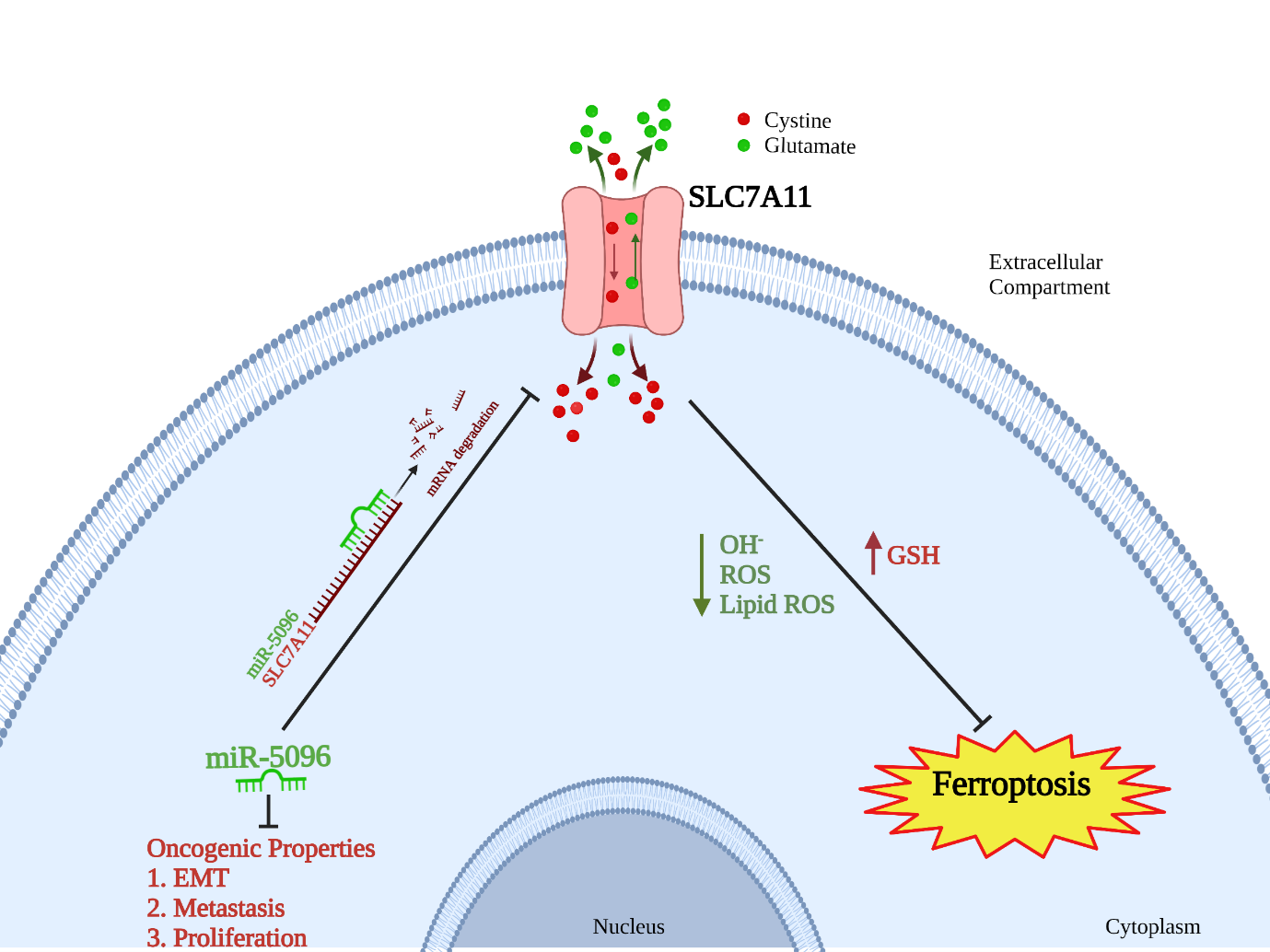
Currently, there are 3 ways to treat cancer – chemotherapy, radiation therapy, and surgery. Unfortunately, these methods are not enough to treat cancer as they not only kill cancer cells, but also they kill the normal cells too. Thus there is a search for more effective ways to treat and, hopefully, cure cancer.
Ribonucleic acids (RNAs) are important for the body. They help in the formation of proteins, many of which are important for the normal functioning of the body. There are various forms of RNAs such as messenger RNA (mRNA), ribosomal RNA (rRNA), and transfer RNA (tRNA). All these RNAs have important functions in protein synthesis.
Recently, there has been a lot of buzz surrounding what is known as micro RNA (miRNA). Micro RNAs are small RNAs that help in the regulation of genes. These can either kill a cell or can help in its proliferation.
In the case of breast cancer, especially in Indian women, SLC7A11 is a protein that gets over expressed in the breast cancer cells.
Earlier, pharmacological agents like sulfasalazine were used to inhibit SLC7A11. But these were not so effective. In this study, conducted by Ms. Poonam Yadav, Mr. Priyanshu Sharma, Prof. Amal Kanti Bera, and Prof. Karunagaran Devarajan from the Department of Biotechnology, Indian Institute of Technology Madras, Chennai, India, Dr. Sandhya Sundaram from the Department of Pathology, Sri Ramachandra Medical College and Research Institute, Sri Ramachandra University, Porur, Chennai, India, and Dr. Ganesh Venkatraman from the Department of Human Genetics, Faculty of Biomedical Sciences, Chennai, India, a specific micro RNA, miR-5096 was tested with human breast cancer cells.
miR-5096 was found to induce cell death by suppressing SLC7A11 protein. This is the first time miR-5096 has been studied and used to target SLC7A11 in breast cancer cells. The cell death occurs by a process known as ferroptosis. Ferroptosis is an iron-independent oxidative or metabolic form of cell death that occurs due to the disruption of iron homeostasis and the lipid peroxide defence mechanism and targets the proteins essential for cancer cell sustenance. Interestingly, the dependency of cancer cells on lipid metabolism makes them more susceptible to ferroptosis.
The present study demonstrated that miR-5096 targets and down-regulates SLC7A11, thereby providing a mechanistic basis for ferroptosis in human breast cancer cells. The results of this study proved that miR-5096 can effectively kill breast cancer cells and highlighted the therapeutic potential of ferroptosis in treating human breast cancer. As of now, the use of micro RNAs to treat cancer in the clinic has not been achieved. Future studies are needed.
Prof. Kumar Somasundaram, Professor and Chair, from the Department of Microbiology and Cell Biology, Indian Institute of Science, Bangalore, India, commented at length on the novel work done by the authors by giving the following comments:
Small RNA Inhibits a Cystine/Glutamate Transporter: An Emerging Target for Breast Cancer Therapy
Transporters are carrier proteins that mediate the exchange of various ions, peptides, small molecules, lipids, and macromolecules through the physical barrier of the cell (plasma membrane). These are indispensable for the normal functioning of the cell and our well-being. But cancer cells use these transporters in their favor for rapid and uncontrolled growth by taking up nutrients, excreting waste products, and creating a propitious environment. One of these transporters that breast cancer cells use to their advantage is SLC7A11 (Solute Carrier Family Seven Number 11). SLC7A11, a cystine/glutamate transporter, accelerates intracellular glutathione (antioxidant) synthesis and prevents the cells from hazardous reactive oxygen species-mediated stress. Cancer cells utilize this pathway by overexpressing the transporter with a resultant increased tumorigenic potential. This transporter protein is also associated with chemo- and radiotherapy resistance in cancer.
In this study, Prof. Karunagaran’s group found a novel miRNA (a type of small RNA) known as miR-5096 that specifically targets SLC7A11 and inhibits its function. This inhibition caused iron accumulation-associated programmed cell death (ferroptosis) and decreased tumorigenic potential of the breast cancer cells (Figure 1). Epithelial-mesenchymal transition (EMT) is a characteristic of metastatic cancer cells that makes them more mobile and migratory from their primary site. The miRNA identified in this research work also modulated the EMT process.



In the literature, various approaches have been utilized to inhibit this transporter, including the use of pharmacological agents such as sulfasalazine and 2-imino-6-methoxy-2H chromene-3-carbothioamide (IMCA) and small RNAs such as siRNA (small interfering RNA) and miRNA (microRNA). Findings from this article define the tumor-suppressive potential of miR-5096, and targeting cystine/glutamate transporter through this miRNA will be a potential therapeutic strategy for breast cancer treatment and inhibit cancer metastasis. However, a detailed investigation of the above findings, including the use of other animal models, is necessary, as said by the authors, to take forward to clinical trials. Overall, this study has identified a novel therapeutic target for breast cancer.
Reference: Yadav, P., Sharma, P., Sundaram, S., Venkatraman, G., Bera, A. K., & Karunagaran, D. (2021). SLC7A11/ xCT is a target of miR-5096 and its restoration partially rescues miR-5096-mediated ferroptosis and anti-tumor effects in human breast cancer cells. Cancer letters, 522, 211–224

Article by Akshay Anantharaman
Here is the original link to the paper:
https://www.sciencedirect.com/science/article/abs/pii/S0304383521004924?via%3Dihub









